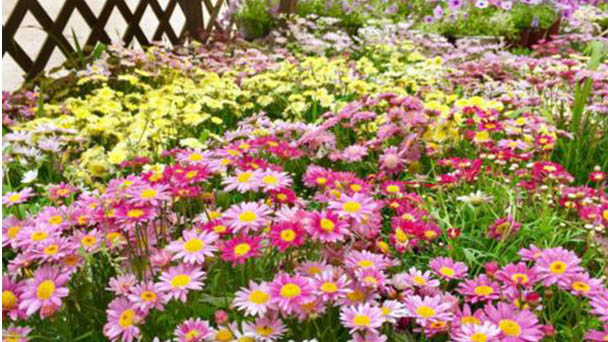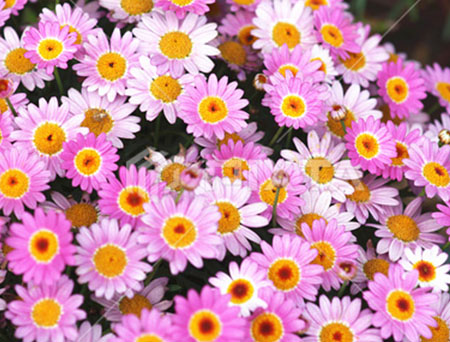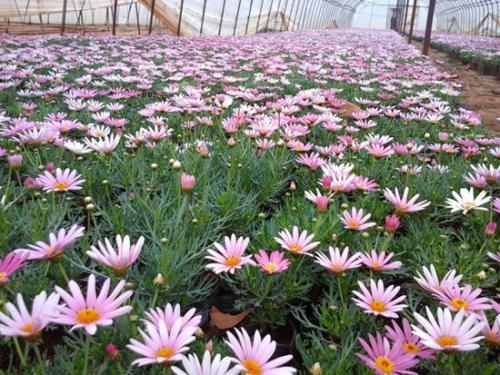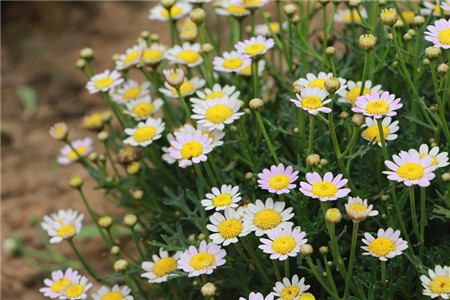How to grow Argyranthemum frutescens
Written by Maggie
Nov 12 2020

Argyranthemum frutescens is actually a plant of the Compositae family, also known as Basil Chrysanthemum. Its leaves are broadly oval, oval or oblong. There are many heads, and they are arranged in irregular cymbals at the ends of branches. It is often cultivated as bonsai in parks or botanical gardens throughout China for ornamental purposes. So how should Argyranthemum frutescens grow? Let's go see it together.
Argyranthemum frutescens picture

The cultivation method of Argyranthemum frutescens
Environment: argyranthemum frutescens likes a cool and humid environment.
Soil: argyranthemum frutescens likes loose, fertile, well-drained soil.
Fertilization: Generally, apply plantar fertilizer when changing pots and planting, and do not apply fertilizer at other times. Chicken manure and a small amount of slow-release fertilizer are used as the base fertilizer. Chicken manure has been cooked, so it doesn’t matter if you have more. The amount of slow-release fertilizer must be controlled according to the size of the pot. The most important point is that the roots cannot contact the fertilizer. During the flowering period of Argyranthemum frutescens, some fertilizer is occasionally added, and the "must bloom" is used.
Pruning: Argyranthemum frutescens is generally not pruned, and only particularly outgrown branches are cut short during the seedling stage.
Breeding time: Argyranthemum frutescens is reproduced with cuttings. It can be carried out in spring and autumn, and the specific time is generally determined according to the flowering time requirements.
How Argyranthemum frutescens became a ball
Ma that has just been cut into the first year of survival will not grow into a very tight ball. After the heat of summer and the severe cold of winter, Ma is easy to grow into a tight ball. Everyone should pay attention that after summer and winter, many of the leaves of Ma's may dry up. As long as the center of the branch is still green, don't discard it. General maintenance and watering. The dead leaves will be cleaned up in March and April of the next year and fertilized by changing pots. Argyranthemum frutescens can quickly grow very dense shoots, and the volume will be more than 3 or 4 times the original size.

Cultivation points of Argyranthemum frutescens:
Argyranthemum frutescens is reproduced by cuttings. It can be carried out in spring and autumn, and the specific time is generally determined according to the flowering time requirements. Cuttings from September to October will bloom on May 1st in the following year, and cuttings will bloom in early spring from June to July. Choose mature and robust shoots for cuttings. Rooting takes about 2 weeks at a temperature of 20-24°C. When the height of the seedling is 10-15cm, the heart can be topped to promote branching. Cutting seedlings in September can be planted in pots in November and placed in a greenhouse for maintenance. In the early growth period, light fertilizer can be applied several times, and thicker topdressing can be applied later depending on the growth situation. After May, the weather gets hotter, and the leaves of Argyranthemum frutescens begin to wither. At this time, watering should be gradually reduced, and the upper branches and leaves should be cut off, and they should be moved outside from July to August. Attention should be paid to drainage and waterlogging prevention during the rainy season.
Argyranthemum frutescens has strict requirements on various environmental conditions. It likes a cool and humid climate and is intolerant to heat. It is especially avoid the strong sun in summer. It must have shading equipment and is not strong in cold resistance. It is cultivated in gardens and flower beds. In winter, frost damage will wither and die. Therefore, when the cold current strikes, potted plants should be moved indoors to avoid the cold, and ground plants should be covered with straw to prevent frost damage.
However, due to the easy propagation of Argyranthemum frutescens, sometimes even some rhizomes can survive, and in some places it almost becomes an aggressive plant, so everyone should be careful when planting.

Latest Updated
- Benefits of Bugleweed - 7 Science-backed Health Benefits
- Bugleweed Dangers & Side Effects - Is It Poisonous?
- How to Plant Evergreen Trees - What You Should Know
- When to Plant Evergreens - Grow Guide for Evergreen Trees
- 12 Wonderful Evergreen Shrubs for Your Garden
- 12 Popular Evergreen Plants with Pictures for Beginners
- When And How To Prune A Lilac Bush Like a Pro
- How to Grow & Care for Lilac Vine (Hardenbergia Violacea)
- Japanese Lilac Tree (Syringa Reticulata) Care & Propagation Guide
- Shumard Oak Pros and Cons - What to Know
Popular Articles
- Winter maintenance of Antirrhinum Majus
- How to Grow Terminalia Mantaly Tree
- How to Grow and Care for Crossostephium Chinense
- How to grow Antirrhinum Majus in spring
- Peristeria Elata (Dove Orchid) Profile: Info & Care Guide
- Underwatered Snake Plant (Sansevieria Trifasciata) - Signs And How To Fix
- How to Care for Brazilian Jasmine Plant (Mandevilla Sanderi)
- How to Grow & Care for Graptopetalum Purple Delight in Summer
- Rosa Chinensis (China Rose): Plant Growing & Care Tips
- How to Care for Baby Sun Rose (Aptenia Cordifolia)